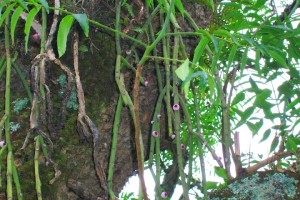BUENOS AIRES, Argentina (JTA) — A team of archaeologists and researchers discovered what they believe was a refuge for Nazis in an Argentine forest near the border with Paraguay.
It is believed that the Nazis prepared the hideout in the first half of the 1940s as a place to flee should World War II not go in their favor, but they did not use the refuge.
The director of the Urban Archaeology Center of the Buenos Aires University, Daniel Schavelzon, is leading the investigative team that is working at Misiones National Park in Teyu Cuare, a province in the northeastern cone of Argentina.

His team discovered German coins minted between 1938 and 1941, and porcelain dishes made by the German Meissen Company between 1890 and 1949.
“We found here an extraordinary type of construction, rare,” Schavelzon told Argentina’s Clarin newspaper. “We have not yet reached a final conclusion, but our first explanation, or idea, is that we have found a refuge for the Nazi hierarchy. The building is very exceptional, with objects and characteristics of building that are not from the region.”
Supporting the theory, he said, is the fact that the walls of the hideout were 10 feet thick and it was located in an inaccessible location.
In a video interview from the excavations, Schavelzon said he rejects the theory that Nazi official Martin Borman, who served as Adolf Hitler’s private secretary, had lived there.
When the Nazis did enter Argentina, they reportedly did so with the blessing of Argentine President Juan Peron and thus did not need the hiding places and the plans to spirit them there.
“We think that we found a huge refuge that ultimately they didn’t use,” said Schavelzon, who also is a researcher on the National Scientific and Technical Research Council, or CONICET.
Misiones province is located on the frontier between Argentina and Paraguay, which is populated by a large number of European immigrants. In 1940, Misiones had a population of 190,000, including 80,000 immigrants — 14,000 from Germany,
“It is very interesting scientific research and we believe that full transparency is crucial to understanding the scope of the Nazi presence in Argentina and South America,” Sergio Widder, the Simon Wiesenthal Center’s director for Latin America, told JTA. “I believe that the enthusiasm should be balanced with a professional approach, which seems to be the case. It is important to note that Schavelzon makes clear that no secret hiding plans were needed in Argentina, since the protection of the Nazis was out in the open.”